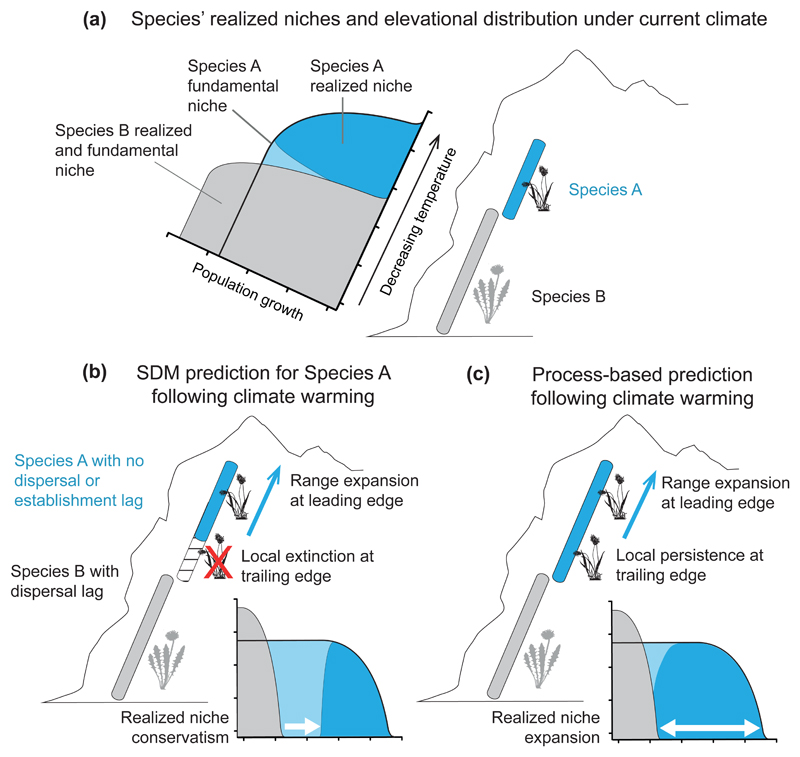Figure 2.
Range predictions for a focal alpine species (species A) following climate change. Species A shows a trade-off between population growth rate and tolerance of low temperature, such that it can tolerate a greater range of temperature than species B, but is outcompeted by species B under warmer climatic conditions (i.e. it has a broader fundamental niche than species B, but a realized niche restricted to cooler temperatures; panel a). Following climate warming, a simple species distribution modelling (SDM) approach for species A, that assumes realized niche conservatism, would predict high elevation range expansion and low elevation range contraction (panel b). However, if species B is constrained by a dispersal lag, as shown, then the prediction of local extinction at the lower elevation range margin for species A would be incorrect. Instead species A would persist at its current lower elevation range margin, expanding its realized niche, due to the absence of competition from species B (panel c). This outcome would be predicted by process-based models that account independently for effects of climate and competition on population growth rates.

